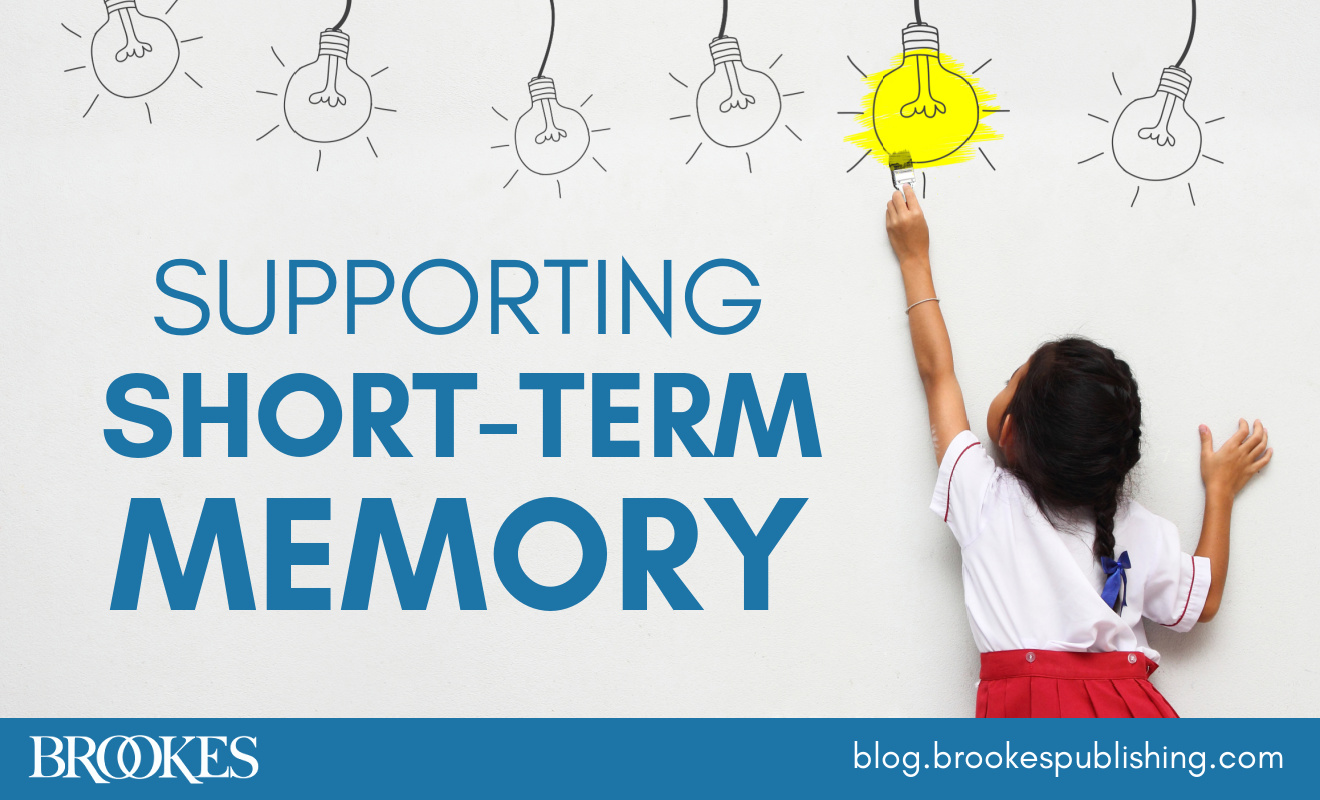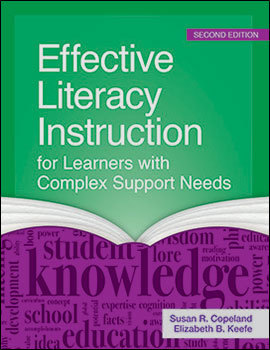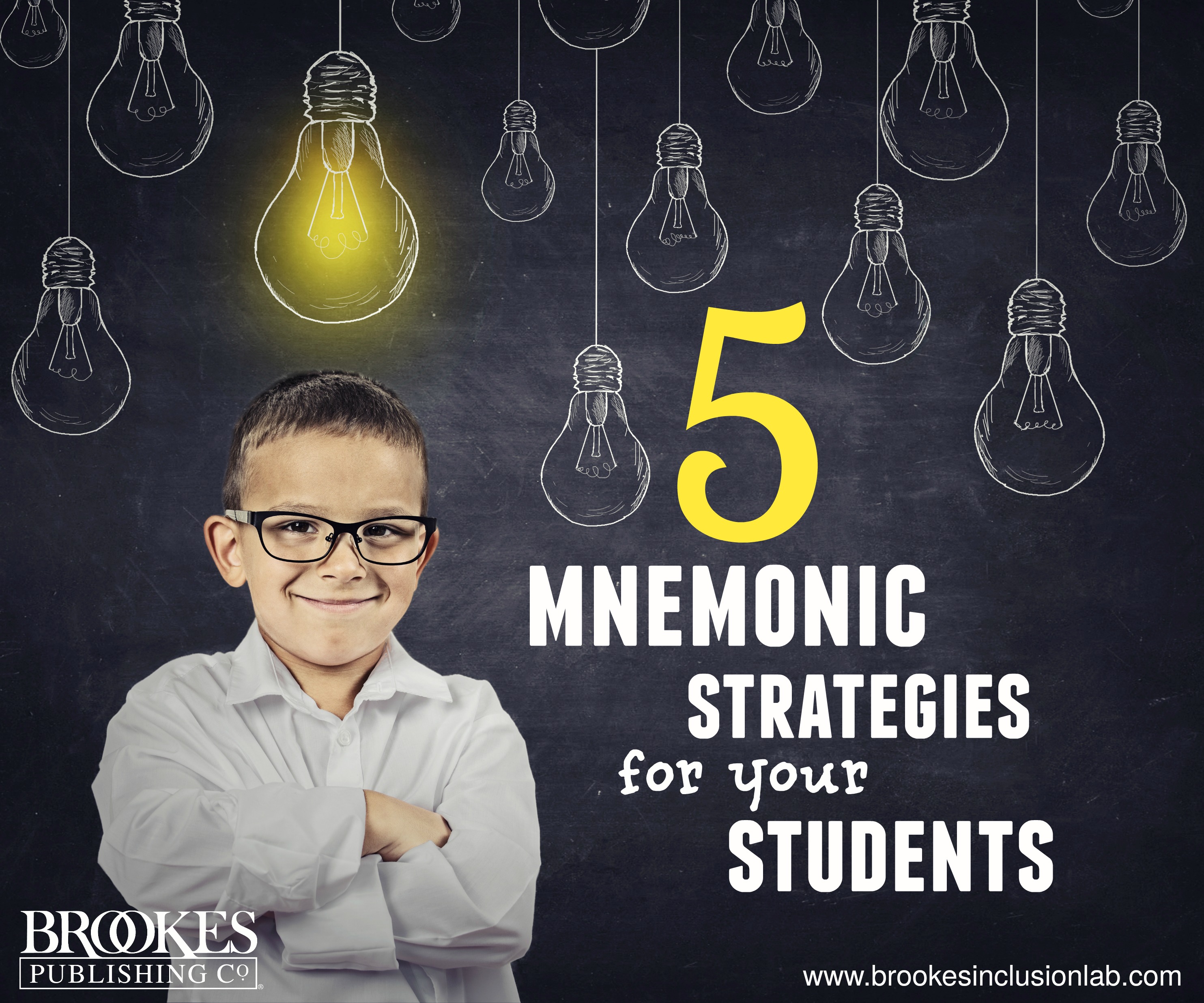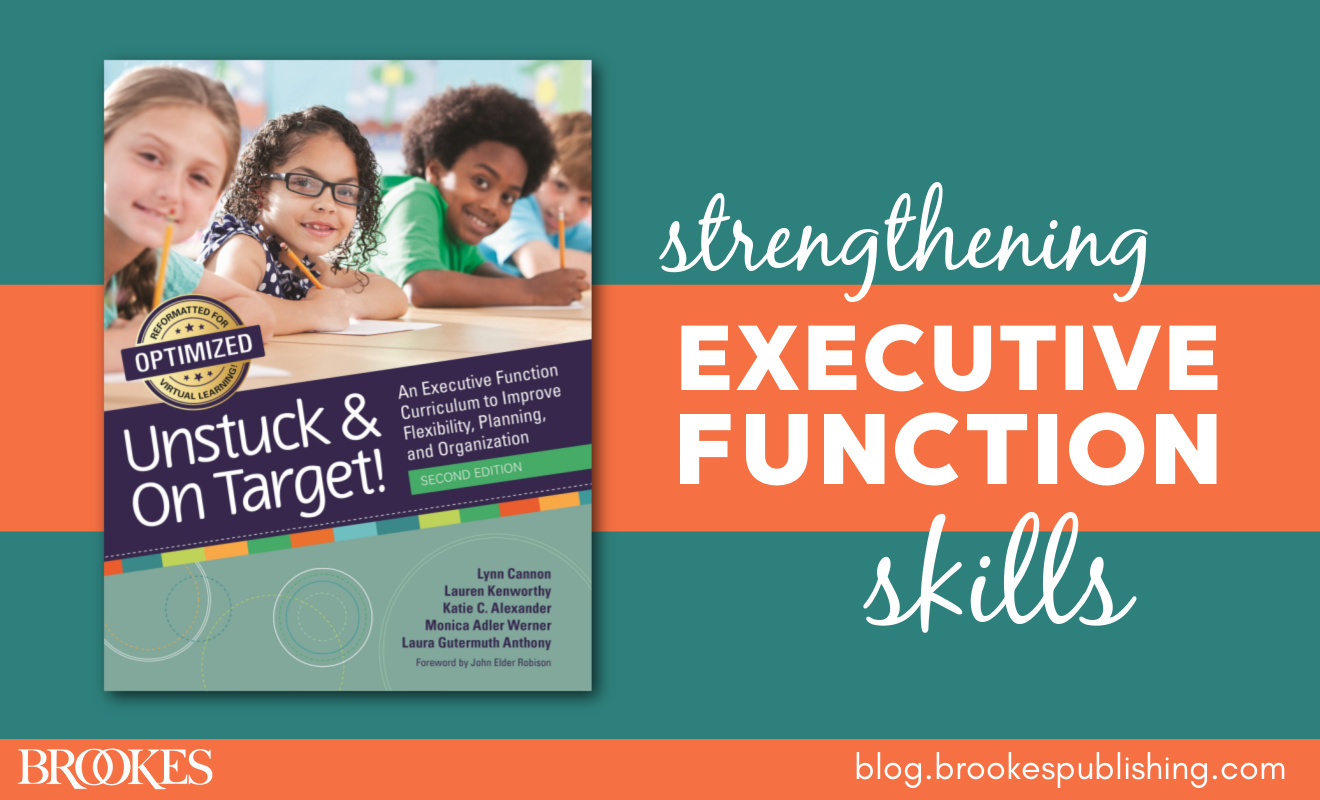4 Strategies for Supporting Students’ Short-Term Memory
August 30, 2022
Short-term memory is an important part of learning; students with a stronger short-term memory will be better able to retain knowledge and process new information. In an inclusive classroom—where students will have varying levels of need and ability—strategies to support students who may struggle with memory will be key to helping every learner succeed.
 Children can hold fewer “bits” of information in their short-term memory than most adults can, and students with complex support needs may have even lower limits. You might see evidence of these limits in situations like these (excerpted from Effective Literacy Instruction for Learners with Complex Support Needs, Second Edition, edited by Susan R. Copeland & Elizabeth B. Keefe):
Children can hold fewer “bits” of information in their short-term memory than most adults can, and students with complex support needs may have even lower limits. You might see evidence of these limits in situations like these (excerpted from Effective Literacy Instruction for Learners with Complex Support Needs, Second Edition, edited by Susan R. Copeland & Elizabeth B. Keefe):
Consider a student reading aloud who comes to an unfamiliar word, stops, and then starts sounding out the word letter by letter. After several seconds, she manages to piece it together, but she now has forgotten what the sentence was about, so she jumps back to the beginning of the sentence and starts over. This example illustrates how reading is a complex task requiring the decoding of letters and a given word while maintaining a memory of the preceding words and the sentence’s overall meaning. Stumbling over an unfamiliar word and having to stop and sound it out letter by letter consumes the entire capacity of short-term memory, with the result that the meaning of the whole sentence is lost.
Given the limited capacity of short-term memory, especially in students with greater support needs, what steps can you take to assist your students in completing multi-step tasks and understanding instructions? Here are four strategies that can help, from the Copeland & Keefe book:
Segment and Sequence Instruction

First, your instructional materials should segment and sequence what is to be learned into manageable, logical steps. When each learning step is small and steps are ordered logically, students will find it easier to follow the instruction without overwhelming their limited short-term memory.
During instruction, you should also ensure that students aren’t lost by checking for understanding. Instead of simply asking if students understand or have questions of their own, be sure to ask specific questions that require your students to demonstrate their understanding through their answers. Students who are non-verbal can show through gestures, signs, or demonstration that they understand the instruction.
Give Clear and Explicit Instructions
 Another strategy for limiting cognitive load is to provide clear, explicit instructions as well as examples. If students are confused about what they should be doing to complete an assignment, figuring this out becomes the focus of their attention, which usurps short-term memory capacity that would be better used to focus on learning from the activity. Providing examples, such as completed sample items on a test or worksheet, can help your students understand exactly what is to be done. This will allow them to focus their mental resources on the activity at hand.
Another strategy for limiting cognitive load is to provide clear, explicit instructions as well as examples. If students are confused about what they should be doing to complete an assignment, figuring this out becomes the focus of their attention, which usurps short-term memory capacity that would be better used to focus on learning from the activity. Providing examples, such as completed sample items on a test or worksheet, can help your students understand exactly what is to be done. This will allow them to focus their mental resources on the activity at hand.
Provide Scaffolds
Scaffolds are supports teachers use to help students by reducing the amount of information they need to hold in short-term memory while completing tasks. Mentally juggling a lot of information at once is a burden; by removing some of that burden for kids who are trying to complete a task, teachers can help ensure that their short-term memory limitations aren’t exceeded. Examples of scaffolds used in literacy instruction include ABC charts posted in the room or on a student’s desk, nametags on desks for quick reference, word walls, graphic organizers, and prompt questions for comprehension. These supports could be individualized or made available to the whole class through a bulletin board, chalkboard, handouts, manipulatives, or classroom wall space.
It’s important to note that scaffolds are not meant as long-term supports, but rather as temporary supports to aid students’ thinking while they learn new information or processes. However, some students with complex support needs may continue to need individual scaffolds to complete tasks independently.
Use Images and Graphics
 Another strategy for reducing the demands on short-term memory during instruction is the use of images and graphics. We’ve all heard the saying “A picture is worth a thousand words.” That’s because an image can convey a great deal of information as just one element; the same information presented in another format might be taken in as multiple elements, quickly using up our short-term memory’s capacity.
Another strategy for reducing the demands on short-term memory during instruction is the use of images and graphics. We’ve all heard the saying “A picture is worth a thousand words.” That’s because an image can convey a great deal of information as just one element; the same information presented in another format might be taken in as multiple elements, quickly using up our short-term memory’s capacity.
Presenting information as a single entity is a great way to reduce the impact on short-term memory. When you use any type of graphic to support instruction, such as pictures, diagrams, flowcharts, timelines, or graphs, you’ll help prevent overburdening your students’ short-term memory capacity. Plus, many of the strategies that reduce demands on short-term memory also support your students’ ability to use long-term memory for storing and retrieving important information.
Use the four strategies in today’s post to build and supplement your students’ short-term memory—and help all your learners complete their work and retain the information you teach. And for comprehensive guidance on how to increase students’ access to literacy in Grades K–12, pick up the book that inspired today’s blog post.





Write a Comment
Your email address will not be published. Required fields are marked *
Post a Comment